- Analyzing and debugging: These two blocks are quite similar. Build them both. Which one works properly?
![Block title Even Or Odd, input n; if (n mod 2 equals 0) [say (join n with text is even) for 1 second]; say (join n with text is odd) for 1 second](/Sept2015/bjc-r/img/2-conditionals-abstraction-testing/Block_even-or-odd_if(incorrect).png)
![Block title even or odd, input n; if (n mod 2 equals 0) [say (join n with text is even) for 1 second] else [say (join n with text is odd) for 1 second]](/Sept2015/bjc-r/img/2-conditionals-abstraction-testing/Block_even-or-odd_if-else(correct).png)
![Block title Even Or Odd, input n; if (n mod 2 equals 0) [say (join n with text is even) for 1 second]; say (join n with text is odd) for 1 second](/Sept2015/bjc-r/img/2-conditionals-abstraction-testing/Block_even-or-odd_if(incorrect).png)
![Block title even or odd, input n; if (n mod 2 equals 0) [say (join n with text is even) for 1 second] else [say (join n with text is odd) for 1 second]](/Sept2015/bjc-r/img/2-conditionals-abstraction-testing/Block_even-or-odd_if-else(correct).png)
even?, is hard to miss, but some people don't like it because in English the question mark would go at the end: is (n) even?. And in any case English questions don't go after the word if. But don't try too hard to read or write any programming language as if it were English.You know that the code  means "if n is even," but programs are much easier to read and debug when the code says what it means, something like
means "if n is even," but programs are much easier to read and debug when the code says what it means, something like  or
or  .
.
even? (n) block. , but an important step is missing.
, but an important step is missing.
 block to report the result.
block to report the result.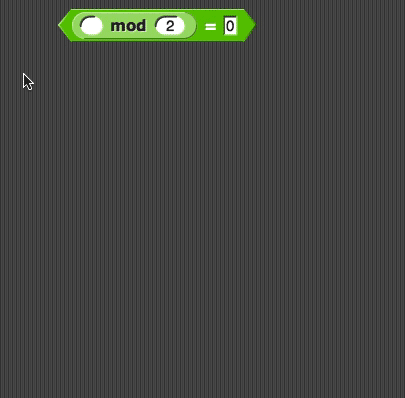
even or odd (from problem 1) to make it use the  block. As always, test the result to be sure it works.
block. As always, test the result to be sure it works.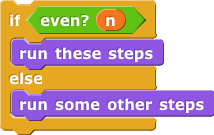
.gif)
To decide, it needs a predicate that tests the next letter to see if it's a vowel. It should work like this:

There are many ways to create a block like this. Here's one way, started for you.
Complete it, test it, and save it for future use.
true or false. Choose the shape when you first define the block.
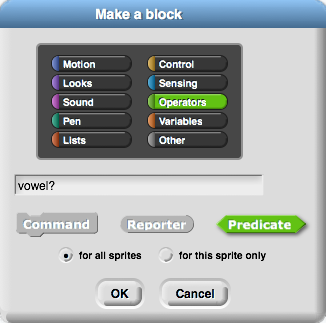
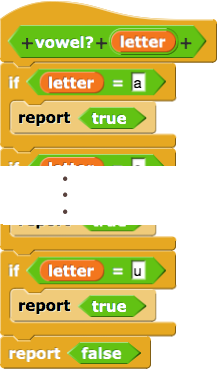
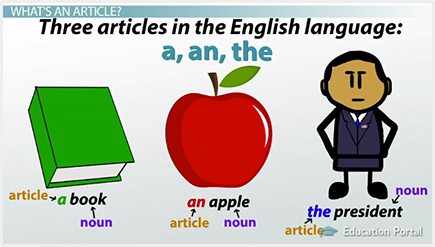
use indefinite article (noun) that works like this:
 When you define this block, you will need to choose the rounded reporter shape.
When you define this block, you will need to choose the rounded reporter shape.You will need to use .png) with two inputs. The block shows a slot for only one input, but you can use the arrows
with two inputs. The block shows a slot for only one input, but you can use the arrows  to increase or decrease the number of inputs.
to increase or decrease the number of inputs.
The solution to problem 1 needs only one if statement, because all integers are either even or odd. If the boolean expression (n mod 2 = 0) evaluates to false, the number is not even, so it must be odd.
The way problem 4 was approached above used several if statements because it tested for several conditions.
mod m reports the remainder when n is divided by m. That remainder is 0 only when n is a multiple of m. So,  reports 0 only when the sprite's
reports 0 only when the sprite's direction is a multiple of 60°. So, the predicate  is true only when
is true only when direction is 0, 60, 120, 180, 240, or 300.
When the sprite's direction is not a multiple of 60,
 reports a number other than 0. For example, if the sprite's direction is 127°,
reports a number other than 0. For example, if the sprite's direction is 127°,
 reports 7.
reports 7.

When the sprite is pointing in direction 90,  reports 0.
reports 0.
 .
.
In how many other directions will the predicate  report
report true?
if-else and repeat until) control each of these scripts. Construct and analyze them with your pair programmer, experimenting with the conditions until you are sure you can explain exactly how this code does what it does.
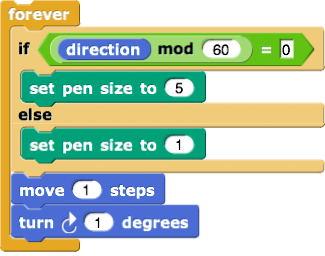
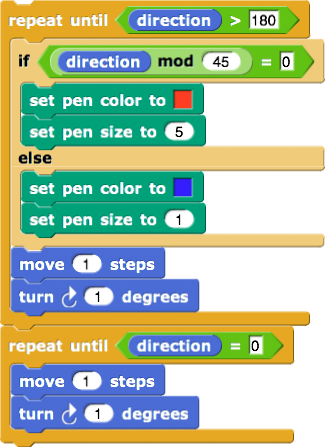
direction mod whatever = 0, you used direction mod whatever = 20? direction mod 23 = 0?turn 2 degrees or turn 7 degrees instead of turn 1?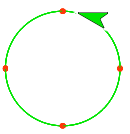
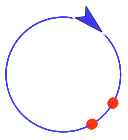

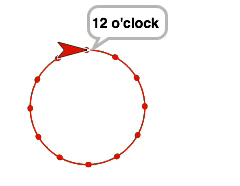
Data types: snap lets you manipulate a variety of data types. You have already used blocks like letter (1) of (world) to manipulate strings of characters such as "New York" or "Another hour has passed". You have also manipulated numbers.
The next two problems give you a first taste of a new data type, lists, and show how useful lists can be. In Unit 3, you will study lists in depth.
if statements in vowel?, you can make a list of vowels and then test to see if a particular letter is in that list. snap makes that a snap!
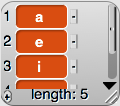 that you see when you click on
that you see when you click on ![]()
![]()
![]()


vowel? using list and contains.-contains().png) to redefine
to redefine vowel?. With your pair programmer, figure out how each works. Decide which you find clearer..png)
.png)
if-else, not just if. Problem 4, however, seems to choose alternatives with plain if. Why does that work? (There's a subtle hint in the shapes of the  and
and  blocks.)
blocks.)